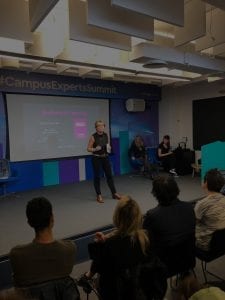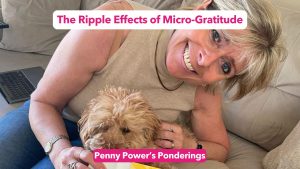Here I am sharing the tenth article in this series about ‘Community Led Growth’. It is an exciting journey for me, I am loving the discipline and also the thoughts that come through while I am attempting to inspire more people to lead great communities. Thank you for the comments and the messages I receive. I can tell I will need to assemble quite a team around me to help people that are coming forward to implement community, it takes many talented people to create community and change in this way.
In this article, I am writing about the ‘3 critical elements of community led growth.
“Community Led”, two very important words, think about them as you read on. This is about ‘leading community’, not ‘leading the business’. Enabling your ‘citizens’ to innovate, grow, influence, and become healthier in mind and soul. It is a responsibility and therefore important to understand the ‘community’ you seek to lead, the people you want to support, the impact your community will have on their wellbeing, the shared impact of coming together, and the experience of your company and the culture that they will experience through your creation of your community. I could actually call this ‘Community Led Learning’, as the learning and development all participants have, especially the Leader, is quite extraordinary, no one needs to have all the answers when starting a community, it is actually best not to have them.
I have thought a lot about the elements that have made my experience of creating and building community successful over the years. I am a practical, doing person, I am not academic. I learn through my own ‘doing’ and observe. These elements are my core structure for beginning one.
The Philosophy and beliefs you hold
The Community you seek to build
The Citizens you want to attract, their gain and their part in the success for all
I will give a few thoughts about each of these to spur thinking
The Philosophy
I fear that I am misusing this term, however, to me philosophy is about how we think, our ethics, meaning and value we provide. It is a subject that can be massively debated, and you can spend your whole life trying to understand ‘philosophy’. I am going to use this term to ask you …
….‘what do you believe in?’
We are all asked to create our ‘purpose, values, mission, and vision statements’. However, when you are building community, these brilliant statements must be created from within, by the citizens, not the owner of the community. To restate, the community sits outside of all the ‘business agenda’s’ brought together under the beliefs you hold and the impact you seek to have.
These critical aspects of the community, ‘purpose, values, mission, and vision’ cannot be achieved until they all understand what they have created, together and then they can own and live them together. Community is different to ‘Organisational Structures’.
A Business Leader, seeking to create a sense of belonging for their clients, staff, or wider stakeholders, needs to behave very differently when leading a community than leading their Company. Communities do not have hierarchies or power; they are totally levelled out and each person is as critical and as valued as the next. The diversity within, IS the magic, and this magic brings out the passion and shared values and this enables innovation and future proofing, it is a strategy for ‘designing from within’, of letting go and listening. Communities are the highest form of equality.
In the case of our community, BIP100, our belief/philosophy is ‘Business is Personal’, our desires are to create the space for people to know that emotion in business is a good thing, to share their emotions, to have personal choice in business and to fight against the phrase ‘it’s not personal’ it’s just business’. It is a movement, a belief, a philosophy.
Simon Sinek, Author of ‘Start with Why’, states this
“People don’t buy what you do; they buy why you do it. And what you do simply proves what you believe”
He also states
“We are drawn to leaders and organizations that are good at communicating what they believe. Their ability to make us feel like we belong, to make us feel special, safe, and not alone is part of what gives them the ability to inspire us”.
I love these words by Simon Sinek as he brings together the challenge that Leaders have, those of ‘encouraging people to believe in them and their beliefs’, to build ‘believers, not just focus on the tasks that each person is selected to perform. Stating, ‘if you believe in what I believe in, we can create something special together’.
This quote from The Little Prince also inspires me.
“If you want to build a ship, don’t drum up the men to gather wood, divide the work and give orders. Instead, teach them to yearn for the vast and endless sea.”
Now let’s move on to the 2nd Element – Community
Community is the manifestation of an organisation’s beliefs, purpose, vision, and mission. A way to bring a mass of people together, all with diverse tasks and drivers, but sharing in the beliefs/philosophy of the company.
With the creation of community, as stated in my previous articles, the aim is not to control, the aim is to allow people the freedom to see the unseen, to voice their experiences, to share their wisdom and to innovate, without effort, without it being forced, without the need for ‘away days’ just pure chat and conversation and the occasional lightbulb moment. Creating ‘togetherness, without the request for an outcome.
Latif Nanji – Co-Founder and CEO Roadmunk, stated this in an excellent article called ‘Community-Led growth, The Future of Product Success?’
“To me, Community led growth is about cross-pollination of your customer* coming together to use the products and services you offer, in ways that may be unobvious even to the company itself. I think it really starts by thoughtfully creating a community-whether it’s through content, or sharing information – that actually generates what the products and services of the future are. And that creates a cyclicality of ideas, an exchange between customers and the company”
*For the purpose of this article, please see ‘customer’ as staff, stakeholders or customer’
This ‘customer’ engagement and commitment can only happen with a very open attitude to the conversations and the connections people make. The agenda cannot be controlled, tasks cannot be set. The gaps, innovations, that emerge in a service or product are seen when people find themselves valued, respected, and are given the safe space to voice, and when they are heard, and when they are given time.
I have written a great deal about ‘community’ in the past 9 articles in this series. I will only add here, that in order to achieve a ‘future-proofed’ business, the leaders must have the mindset of being ‘open, random and supportive’ ORSTM and a ‘Servant Leadership style.
Finally, the 3rd element is the ‘Citizens’
In my 7th article, I wrote about ‘Citizenship’, which arguably is the most critical element, without the citizens, you do not have a community.
There should never be a rush to recruit the ‘citizens’, it takes time for them to find you, and they will come, providing the philosophy you are sharing is what drives you to grow the community. This is the difference between being a fisherman or a flower.
“The ‘fisherman’ throws the net out and hopes to catch someone, the ‘flower’ waits to be pollinated by the bee.”
Penny Power OBE
The ‘recruitment’ of the citizens is a really tough part of building a community. They cannot come by force; they have to want to be part of the ‘movement’ and ‘beliefs’ that you hold. Thomas Power, Co-Founder of Ecademy, stated this as the ‘law of stepping forward’. Without prejudice or judgement, we bring in the people that see what we believe in and want to add value to it. True diversity, inclusion, and equality.
To finish, James Redfield, Author of ‘Celestine Prophecy, stated these beautiful words
“You do not make yourself love… You allow love to enter you.”
When the right ‘citizens’ find you and ‘believe in the same philosophy’, and you bring them together within a ‘community’, that is when magic happens. Don’t force, don’t control, or dictate, just let them be the incredible people that is within them. Create conversation, build the love, build the belonging, and then watch what happens.
*This blog first appeared in my LinkedIn newsletter.



